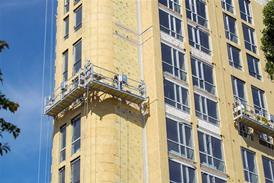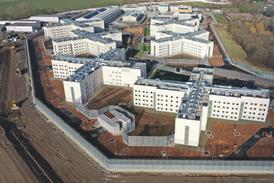The new BS format contains explanatory commentary together with the associated recommendations, and addresses the roles and responsibilities of each of the principle parties involved, from design through to installation, commissioning, maintenance and use. Certification is required for each phase and there is an emphasis throughout on the avoidance of false alarms.
References to the new BS in specifications or other documents will be meaningless unless the system category is included. The three main categories (described as 'Types' in the earlier BS ) are:
- L1 systems which will provide automatic detection throughout the building, possibly with a few specified exceptions.
- L2 systems will satisfy the recommendations for L3, but with additional detectors in particular areas specified by the designer.
- L3 systems should ensure that everyone in the building is alerted before their escape routes become impassable.
- L4 systems will provide detection within escape routes only, such as stairways and corridors.
- L5 systems will cover miscellaneous situations, normally with just a few automatic fire detectors located to achieve protection as part of a fire-engineered solution following a risk assessment.
- P1 for total building coverage by automatic fire detection.
- P2 for automatic detection in specified areas only.
After years of debate the latest standard introduces two new definitions for cable fire performance: enhanced and standard.
Enhanced fire resistance is generally translated as being satisfied by mineral insulated copper sheathed (mics) cables and possibly others but subject to compliance test methods which have yet to be published and embraced by industry. This cable type, together with appropriate methods of support and jointing, is recommended for large unsprinklered buildings/premises, or those having four or more phases of evacuation, or as determined by a risk assessment concluding that the cables could be required to survive a prolonged exposure to fire conditions.
Standard fire resistance is expected to include the currently available 'soft-skin' cables to BS 7629. The majority of applications, including large unsprinklered buildings in which networked, stand alone systems are used, will be satisfied by this cable type.
The new standard also recommends that all critical path cabling (including system network cable and mains power supply wiring) should be fire resistant, and segregated from other services in order to obviate possible interference problems and mechanical damage from adjacent site work.
Radio-linked systems
The new BS now fully recognises the use of wireless systems, in which secure, encrypted radio signals are used to link the system components instead of cable. These components look much the same as conventional ones, but contain small transceivers and, generally, main and standby batteries.
These systems can be installed and commissioned very quickly, leading to reduced on-site labour costs. They are suitable for heritage buildings, hotels, residential homes, refurbishments and temporary installations, but are gaining wider acceptance as more designers and clients recognise the potential advantages.
There are four types of automatic fire detection and alarm systems that may be specified: conventional, digital addressable, analogue addressable, and distributed intelligence. In practice, however, technology progression has blurred the distinction between the addressable systems so that the most highly developed analogue addressable systems can now programme field devices to match the prevailing environment and risks.
Conventional systems
Conventional systems feature detectors which register an alarm condition when a threshold value is exceeded.
The design of the circuits of conventional systems group detectors into zones so that the location of a fire can be quickly identified.
Conventional systems are suitable for use in occupied buildings with a low fire risk where the source of fires can be readily identified by staff, and where there is little likelihood of interference to accurate detection.
This type of system features detectors that register alarm conditions when a threshold value is exceeded, and which relay the exact location of the detector back to a control panel.
Addressable systems are particularly important in complex, highly cellular buildings where fires may start in unoccupied or enclosed spaces. In addressable systems, detectors are typically linked in loops of 100 to 250 points.
These use detectors that evaluate the signal produced by a sensor and transmit an assessment of a detected event back to a central processor as an analogue value. Software in the central processor enables these readings to be compared against a range of pre-programmed event characteristics.
Analogue addressable systems identify the exact location of the device, and have the ability to trigger a range of pre-alarm states that enables alerts to be investigated or the fire brigade called without initiating the evacuation of a building (see figure 1).
This type of system is typically specified for high quality commercial developments where the ability to reconfigure space planning, manage responses to alarms and minimise false alarms is valued.
Distributed intelligence systems
Such systems have interactive multi-criteria detectors with on-board electronics that can evaluate signals at the point of detection. As the evacuation criteria of a device can be individually programmed to suit the characteristics of a specific location, interactive detectors have an enhanced ability to identify false alarm conditions.
Interactive detectors define the status of an alarm, and signal its location to a central controller. Distributed intelligence systems are particularly suited to environments where there is a high risk of interference to accurate detection, and where the consequences of false alarms could be serious.
The four basic systems support a range of detectors, alarms and call points. Detectors are selected to suit the most likely source of fire in a particular location and to minimise the occurrence of false alarms. Detectors are designed to respond to one or more characteristics of a fire – smoke, heat, light and more recently, carbon monoxide gas. No single detector is suitable for all applications.
Smoke detectors are the most common type of detection device, as smoke is usually present at the start of a fire.
Ionisation smoke detectors are suitable for the detection of clean, fast-burning fires (caused by the burning of paper and wood, for example). False alarm can be triggered by a number of factors, including high air velocities, extreme temperatures, humidity or perhaps the presence of fumes.
Optical smoke detectors are used in locations when a risk from slow burning fires – soft furnishing or plastic foam, etc – is present. This type of detector is resistant to alarms triggered by high humidity, high air velocity and other factors such as dust or insects. Carbon monoxide detectors also respond well to smouldering fires unless there is much ventilation, and have excellent immunity to false alarms.
Duct probes are used to control ventilation systems to prevent the recirculation of smoke-filled air. Probes are used to sample across the full width of an airline and shield the sensor from high air velocities. Duct probes are typically used with photoelectric detectors.
Beam detectors are often used to protect large volumes such as warehouses, factories and shopping malls, etc where access is often difficult or where the disruption caused by maintenance is unacceptable. Beam detectors are also widely used in historic buildings, art galleries and atria, and can cover an area up to 1400 m2.
Heat detectors are most often deployed in locations such as kitchens where smoke or fumes are generally present. They are usually less sensitive than smoke detectors, and will not respond to smouldering fires. Some damage to property can be anticipated before the heat detector kicks in to trigger an alarm. Heat detectors are triggered by either a fixed temperature threshold, by the rate of temperature rise or by a fixed combination of the two. Such detectors may need to be shielded from direct sunlight.
Like heat detectors, flame detectors cannot detect smouldering fires, but provide the most rapid response to flaming fires. They are often used in combination with other detectors to monitor large open areas such as warehouses or in isolation to monitor highly combustible objects such as pipelines carrying flammable products, or even oil paintings on display in art galleries and museums.
Multi-criteria detectors can help to reduce the risk of either a delayed response or a false alarm. The complexity of the algorithms used to control such monitoring lends itself to distributed intelligence systems rather than central monitoring.
Alarm devices and call points
A wide range of alarm devices – bells, sounders, voice alarms and xenon beacons – is available to suit different locations. The BS also recognises vibrating pads and pagers for use in helping people with impaired hearing, especially where it is required to rouse people from sleep.
Call points are available either as conventional or addressable units. The BS recommends single action manual call points, while recognising that there are situations in which it is desirable to cover them with a hinged lid.
This cost model outlines the individual components costs excluding their associated wiring. This is because there is potentially a wide variation in the type of cable and in the circuit configuration and length that can affect overall costs. Indicative wiring costs are then included on a per device basis.
Exclusions from tables
- Builders works in connection with services
- Temporary alarm installations
- Main contractor preliminaries, site establishment and attendance
- Contingency/design reserve
- Maintenance agreement
- Tender price inflation
- Value added tax
- Site radio integrity tests for wire free systems
- Containment
Downloads
Figure 1 : Typical fire alarm system schematic.
Other, Size 0 kb
Source
Building Sustainable Design





















No comments yet